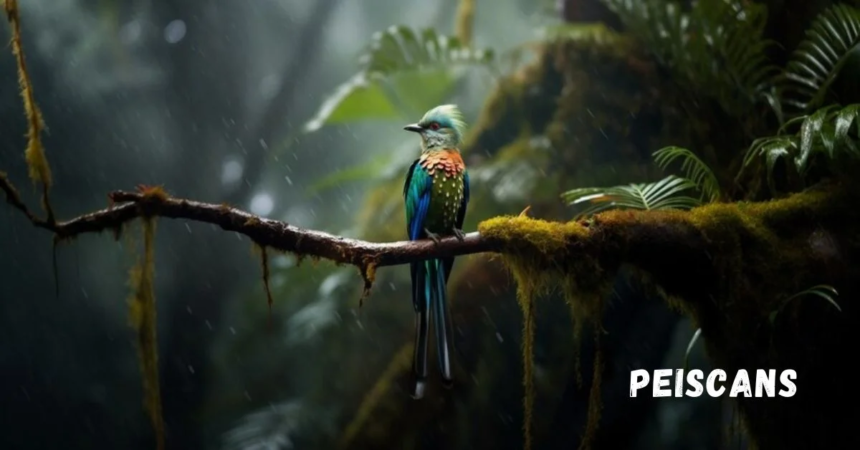Introduction to Peiscans
Deep beneath the waves, a world of wonder awaits. Among the myriad creatures that call our oceans home, peiscans stand out as some of the most intriguing. These rare marine animals are not just another entry in a scientific catalog; they embody a vibrant tapestry of life that captivates researchers and enthusiasts alike. With their unique behaviors and striking physical traits, peiscans offer an incredible glimpse into the complexities of marine ecosystems. Join us on this journey to uncover what makes these elusive beings so remarkable and why they deserve our attention and protection.
What are Peiscans and Where Can They Be Found?
Peiscans are fascinating marine animals that inhabit the depths of our oceans. With their unique adaptations, they have captivated researchers and ocean enthusiasts alike. These creatures belong to a lesser-known family within the aquatic ecosystem, showcasing an array of vibrant colors and intriguing patterns.
Primarily found in temperate and tropical waters, peiscans thrive in coral reefs, kelp forests, and around underwater structures. Regions like the Caribbean Sea and parts of the Pacific Ocean serve as hotspots for observing these elusive beings.
Their habitats not only provide shelter but also abundant food sources. Peiscans often interact with other marine life, contributing to dynamic ecosystems. Exploring their environments is essential to understanding their behaviors and role within oceanic communities. Each sighting offers new insights into this remarkable species’ existence.
Unique Behaviors and Physical Characteristics of Peiscans
Peiscans are fascinating creatures that captivate with their vibrant colors and unique patterns. Their bodies often shimmer with hues of blue, green, and orange, allowing them to blend seamlessly into their coral reef habitats. This camouflage serves as an effective defense mechanism against predators.
Socially, peiscans exhibit intriguing behaviors. They communicate through a series of clicks and whistles while swimming in schools. These interactions foster strong bonds among members of their group.
Feeding habits also set peiscans apart from other marine animals. They possess specialized teeth designed for grasping slippery prey like small fish and crustaceans.
Interestingly, some species have developed remarkable hunting techniques involving coordinated group efforts to herd fish into tight formations. Such teamwork showcases the intelligence inherent in these rare marine beings, making them a truly remarkable example of nature’s ingenuity.
The Role of Peiscans in Marine Ecosystems
Peiscans play a crucial role in maintaining the health of marine ecosystems. As unique creatures, they contribute to the balance of food webs. Their presence influences species distribution and population dynamics.
These vibrant animals often serve as both predator and prey. They help control populations of smaller marine organisms, ensuring no single species dominates the ecosystem.
In addition, Peiscans are key indicators of environmental changes. Their behaviors can reveal shifts in ocean health or climate variations over time. Observing their habits helps researchers understand broader ecological impacts.
Furthermore, Peiscans promote biodiversity by interacting with various marine plants and other animals. This interaction fosters a rich tapestry of life beneath the waves, highlighting their significance beyond mere survival.
These fascinating creatures underscore the intricate connections within our oceans that must be preserved for future generations.
Threats and Conservation Efforts for Peiscans
Peiscans face numerous threats in their natural habitats. Climate change is a significant concern, as rising ocean temperatures disrupt their breeding patterns and food sources. This shift can lead to declining populations, putting additional pressure on these delicate creatures.
Pollution also poses a severe risk. Chemicals and plastics infiltrate marine environments, impacting the health of peiscans and other species that share their ecosystem. The ingestion of toxins not only harms individual animals but can also affect entire populations.
Conservation efforts are underway to safeguard peiscans. Organizations focus on habitat restoration and pollution reduction initiatives. These projects aim to create safer environments for peiscans to thrive.
Research plays a crucial role too. By studying the behaviors and habits of these unique creatures, scientists hope to develop more effective conservation strategies tailored specifically for them. Engaging local communities in awareness campaigns is vital—everyone has a part to play in protecting marine biodiversity.
Studying Peiscans: Challenges and Future Research
Studying peiscans presents a unique set of challenges. Their elusive nature makes them difficult to observe in the wild. Researchers often rely on advanced technology, like underwater drones and remote cameras, to gather data without disturbing their habitat.
Accessing some of their preferred environments can be tricky as well. Many peiscans inhabit deep or remote oceanic areas that are costly and logistically complex to reach.
Future research may focus on understanding their migratory patterns and social behaviors. Insights gained could help illuminate how they interact with other marine species.
Collaboration among scientists worldwide will be crucial for this endeavor. By pooling resources and sharing findings, researchers aim to unlock the secrets of these fascinating creatures.
Innovative methods such as genetic studies might also provide new perspectives on population health and diversity within peiscans. This ongoing exploration holds great promise for enhancing our knowledge of marine ecosystems.
Conclusion: Appreciating the Diversity of Marine Life
The world of marine life is incredibly diverse, with each creature playing a unique role in its ecosystem. Peiscans are a fascinating example of this diversity. Their vibrant behaviors and intriguing physical characteristics offer insights into the complexity of ocean ecosystems.
As we learn more about peiscans, we gain a deeper appreciation for the interconnectedness of all marine species. These rare animals remind us that every organism contributes to the delicate balance of life beneath the waves.
By supporting conservation efforts and fostering awareness around threats faced by peiscans and their habitats, we can help protect these remarkable creatures for generations to come. Embracing this responsibility allows us to celebrate not just peiscans but all forms of marine life that enrich our planet’s oceans.







